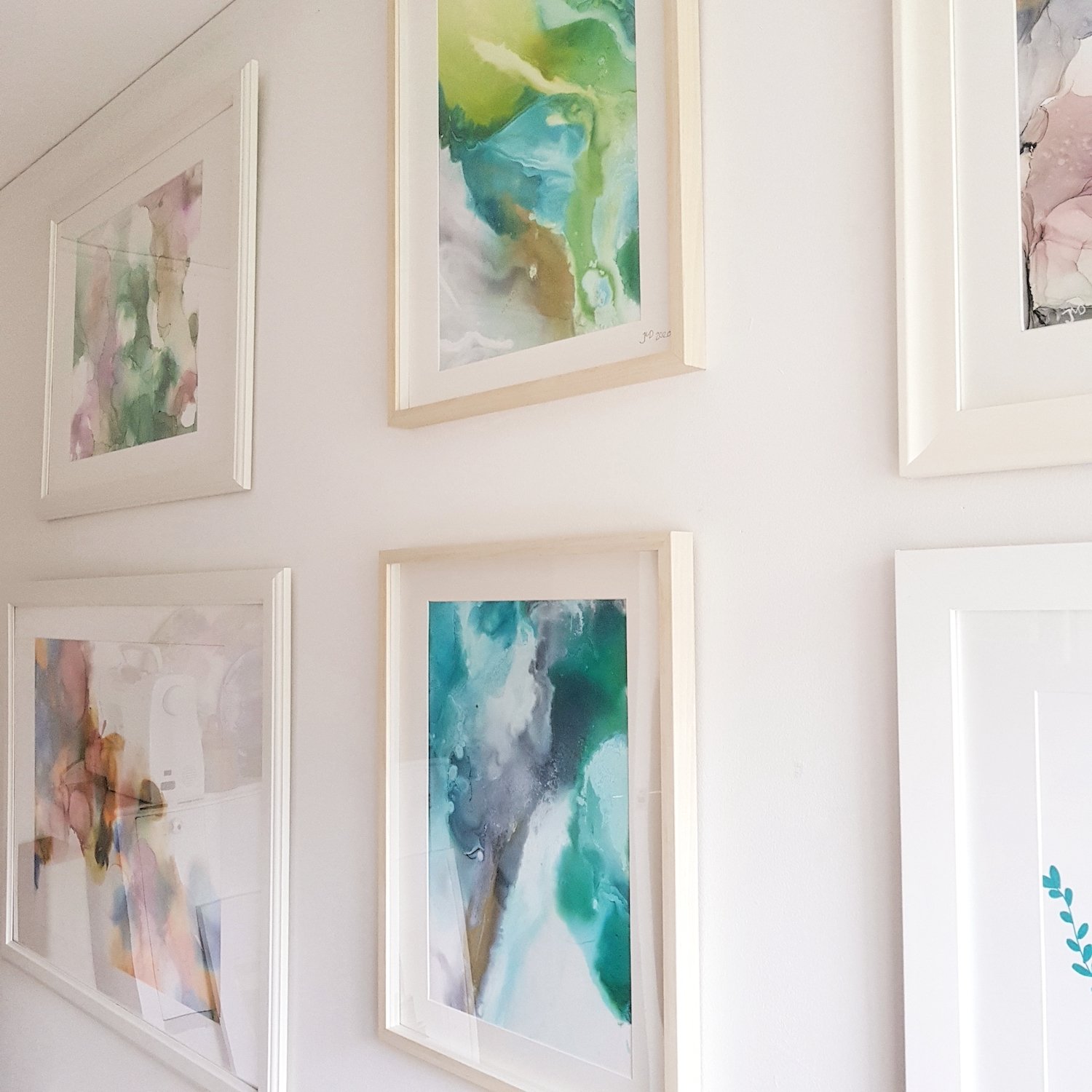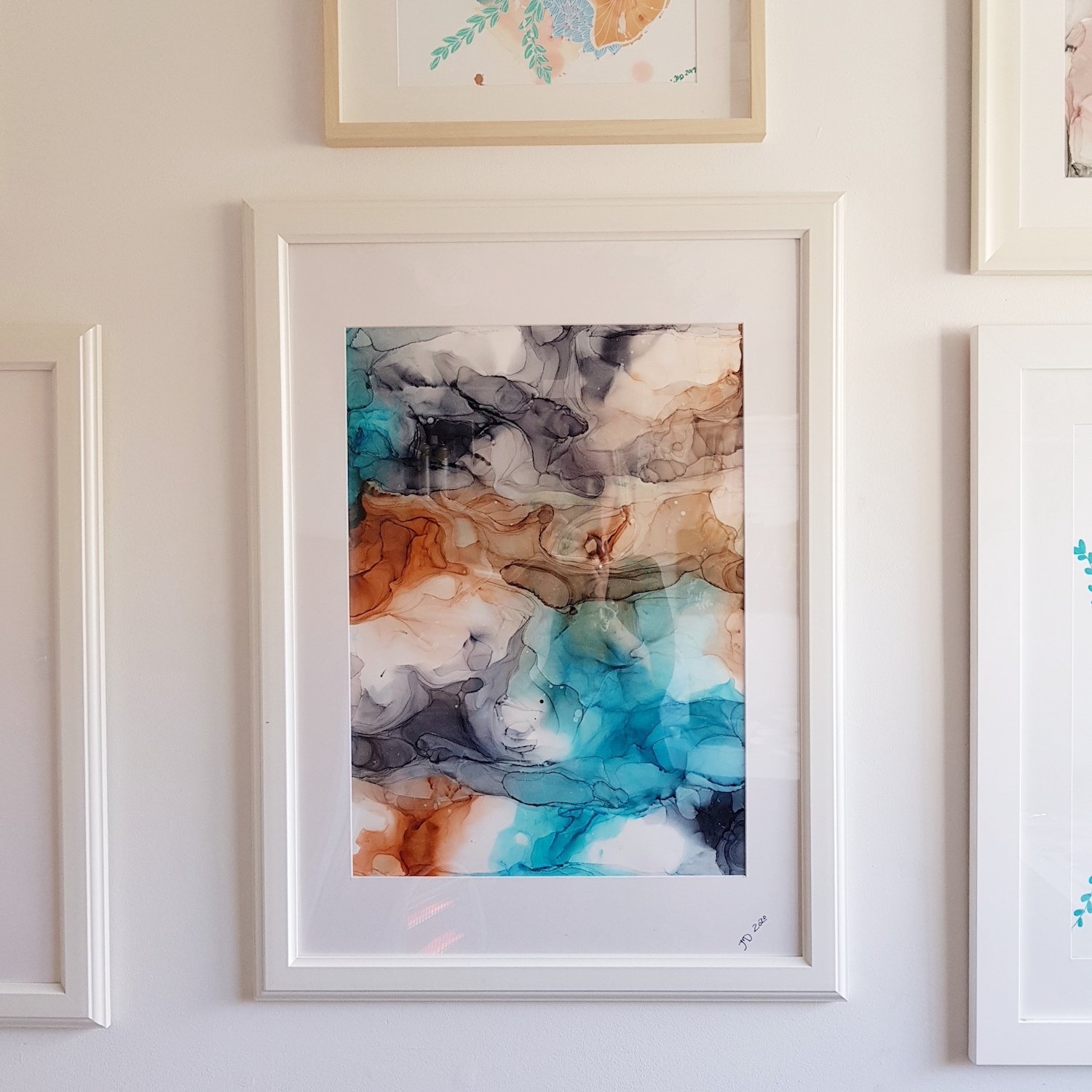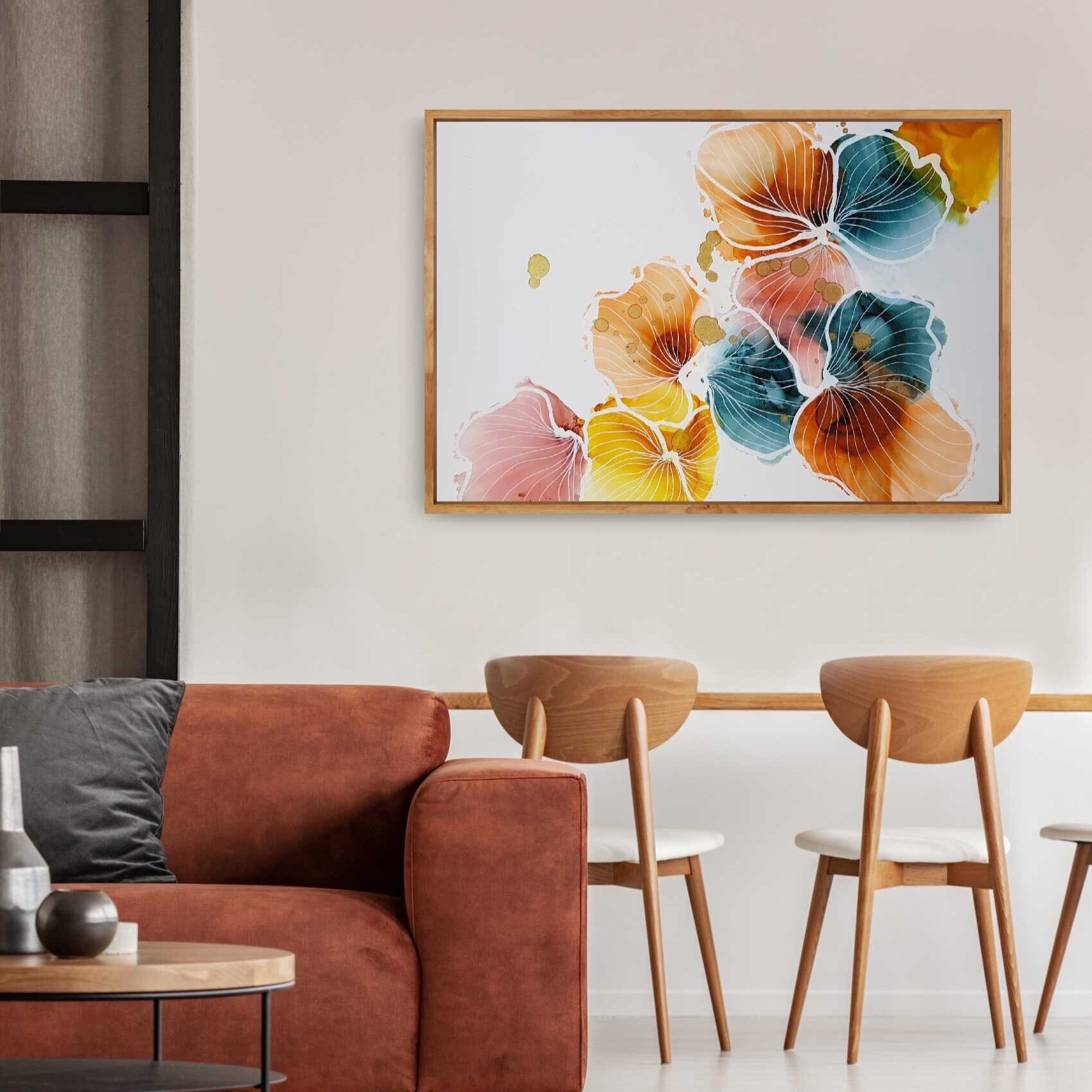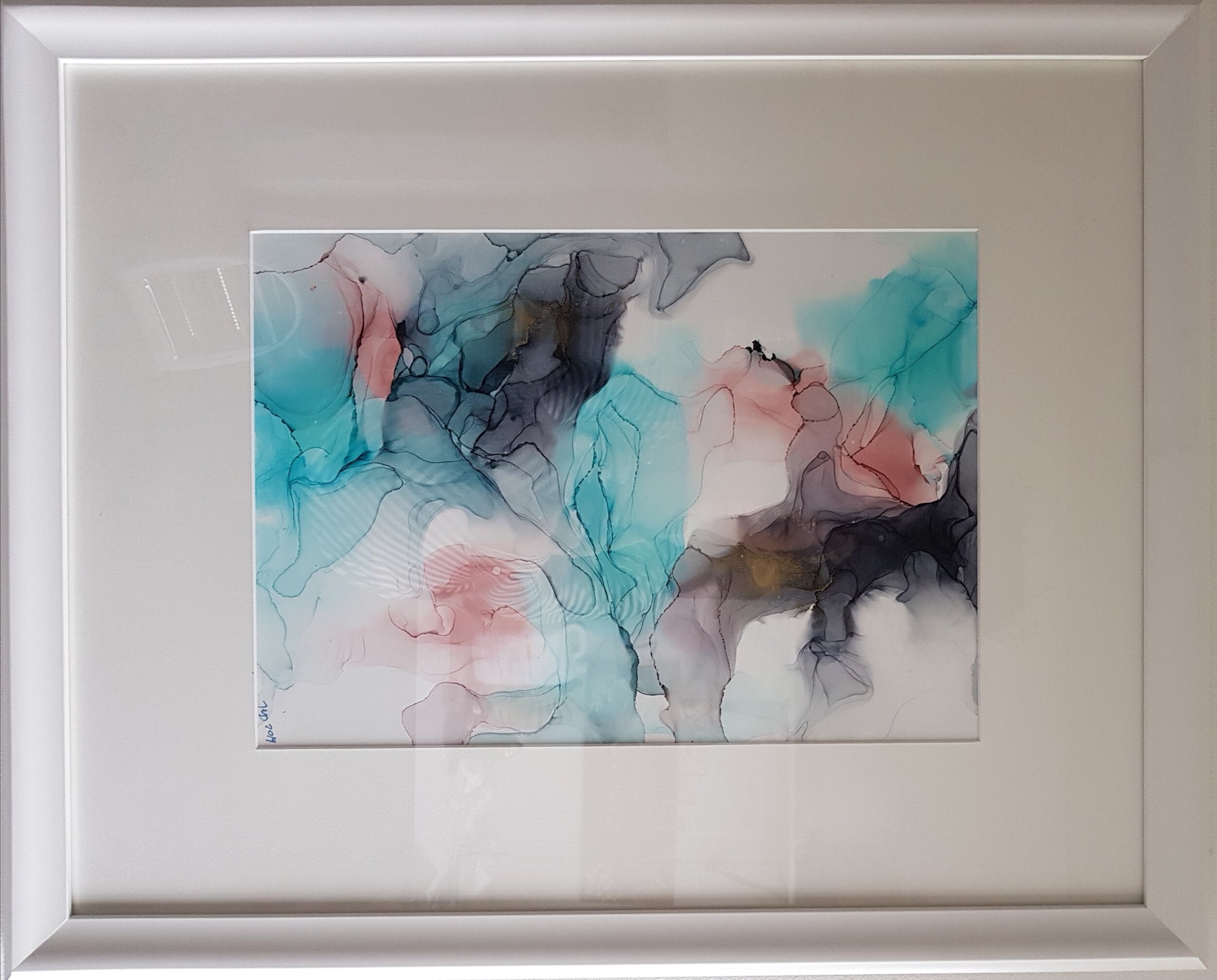When purchasing art, a frame will almost always add to the value of the piece. So how do you frame prints and originals?
Well, you can take all the guesswork out of framing and get your local framer to do it for you - this will probably give more professional looking results, however it will also be more expensive than doing it yourself. If you choose to frame yourself keep reading for my tips to get the best results.
With or without mat board?
You can frame your paintings either with or without mat boards. A matt board is the white “edge” around the painting. It gives room and air between the painting and the frame. Whether to add a mat board or not is really just a matter of personal taste. Personally I prefer a mat board around solid paintings with a lot of colour like the picture on the left. The painting on the right contains a lot of white space, which means that it might not need a mat board around it.
If you choose to frame with a mat board, it is important that you mount it the right way. Hinge mounting is a technique used to secure the painting to the matt board without permanently altering the artwork. Here are a few things to keep in mind.
Firstly, wear gloves to make sure you do not transfer dirt or oils to the artwork.
Secondly, make sure you only mount the top of the artwork using a T-hinge; this allows the artwork to flow and flex. You can use acid free hinging tape to attach the artwork to the matt board. Simply attach the strips to the mounting board as shown on the picture.
How to frame small paintings for a big impact
If you would like your print or original painting to seem bigger than it actually is, framing with a mat board is definitely a good idea. A painting measuring 29.7x42 (standard A3) can look as big as an A2 (the next size up) or even bigger with the right sized mat board. This way, you can customise the size of your art to suit your space.
The painting seen here measures 42x29.7 cm but has been framed using a big mat board and now measures 69x56 cm.
What colour frame to use?
The colour you choose for your frame of course depends on your personal style, however I do have a few tips and tricks on how to choose the perfect colour to suit your artwork.
Most of my paintings are very colourful, especially my abstract art. I find that colourful art gets highlighted in a white or a light wooden frame. If you want to create a more dramatic look, you can choose a darker frame, however I would only recommend a dark frame if the artwork is more simple in its colour or style. For example, my floral pieces often have a lot of white space around them, and a dark frame could therefore suit the artwork.
On the picture you can see two examples of how a dark frame can highlight the artwork. The first painting showcases a simple design with a lot of white space, whereas the second painting showcases a simple and less colourful design, both paintings are suitable for darker frames.
The last picture shows how a very colourful painting can be highlighted using a white frame.
Framed and mounted by me in an IKEA frame. Original painting sold.
Framing big paintings?
This little guide is perfect to follow when framing smaller pieces (anything up to A2). If you want to frame bigger paintings, I would recommend getting it framed professionally or frame it with a backing board. A backing board adds extra strength to the painting. It is possible to frame with a backing board yourself, however I do not have any experience doing this and can therefore not give any advise in this regard.








